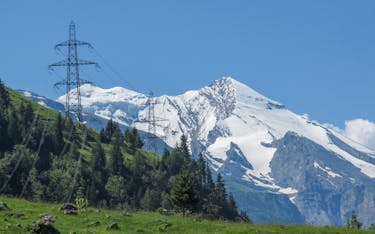The result of cooperation with authorities and infrastructure managers
The project came about as part of the «Studio Generale», a working group that Swissgrid participated in with local partners to find a coordinated solution for power lines and regional planning. See our blog «Power lines and regional planning go hand in hand in Ticino» for more information.
Working together in this way ensures better coordination of planning phases and optimal use of synergies. The Federal Council now intends to implement this model throughout Switzerland in order to speed up approval processes. See our blog «Preparing the grid for the energy transition» for more information.
Ensuring a secure energy supply
The current power lines, built in the 1960s, are undersized and nearing the end of their life cycle. At certain times of the year, the hydroelectric plants in the Maggia Valley have to limit production by almost one third due to insufficient capacity on the transmission lines. Given the current energy situation, restricting renewable energy production in this way is no longer sustainable in the long term. The new power line, consisting of a double connection at 220 kV, solves capacity problems and will help to ensure a secure supply of electricity for Switzerland and Ticino in the future.
Benefits for the landscape and nature
Once the new power line has been built and the other projects in the region have been completed, it will be possible to remove more than 70 km of power lines, which will lessen the impact on valuable landscapes. Improvements are planned in the Bedretto Valley, on the Cristallina pass and in the Alpe Zaria and Campolungo areas, both of which are included in the Federal Inventory of Landscapes and Natural Monuments. Bypassing the beech forests in the Lodano Valley, a UNESCO World Heritage Site, is another benefit of the redevelopment project.










